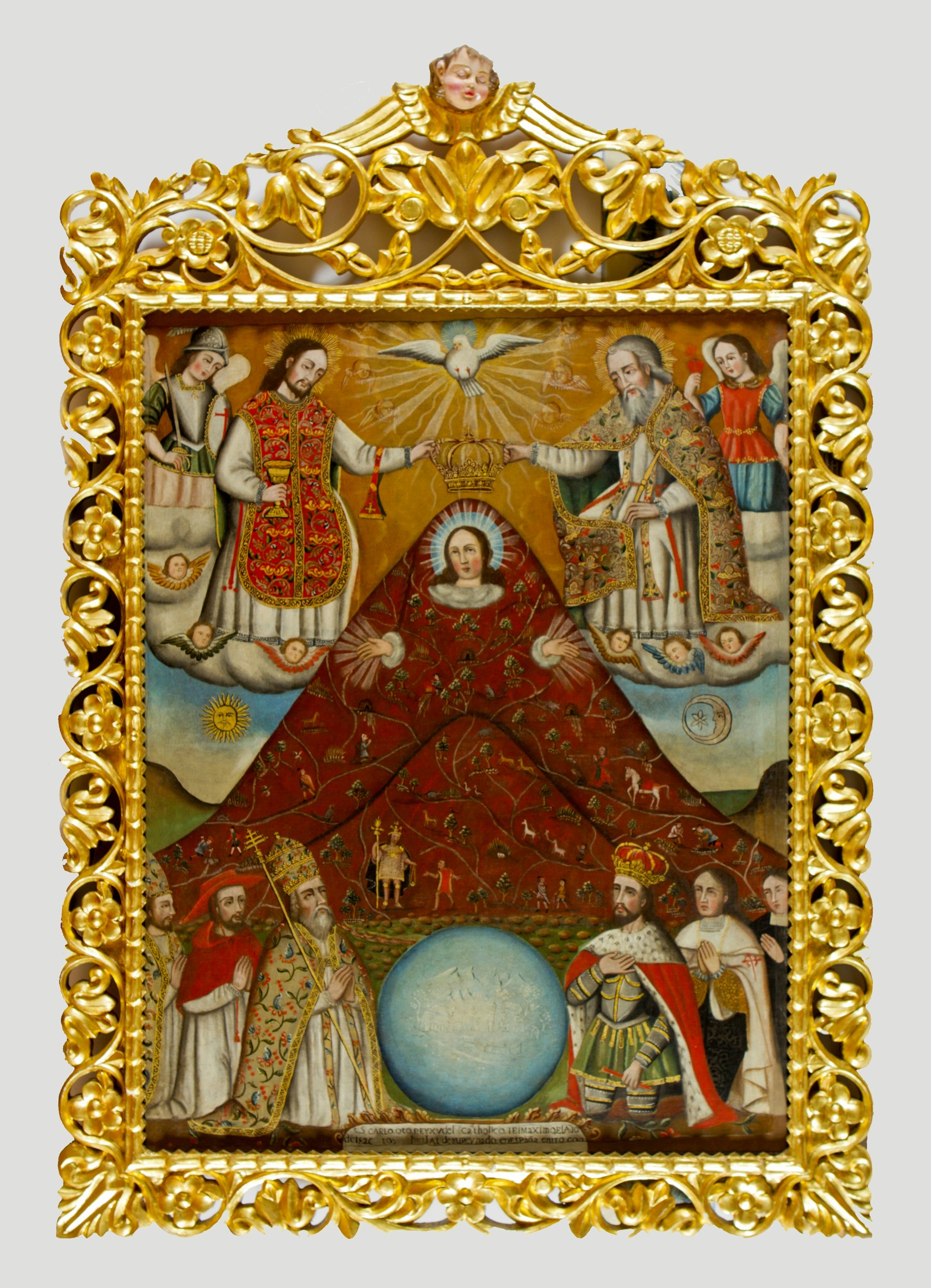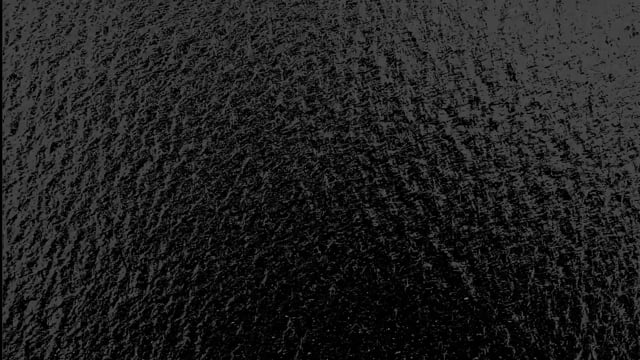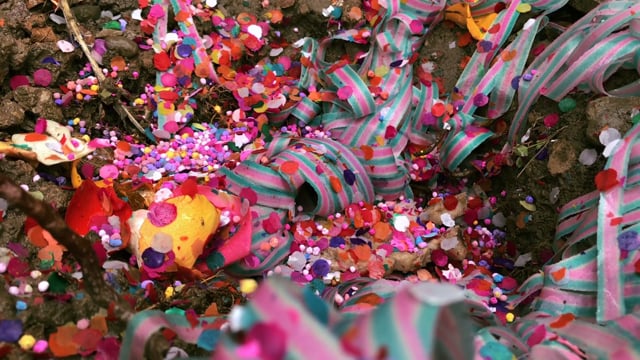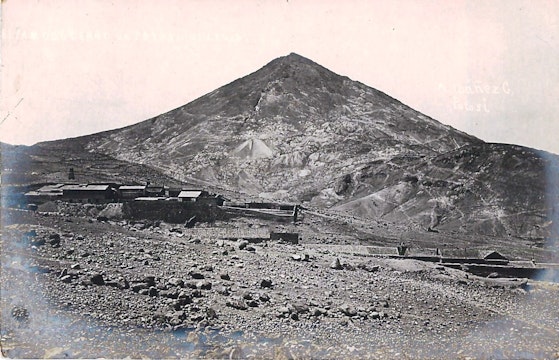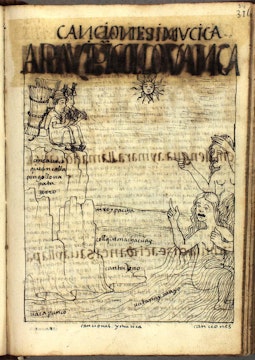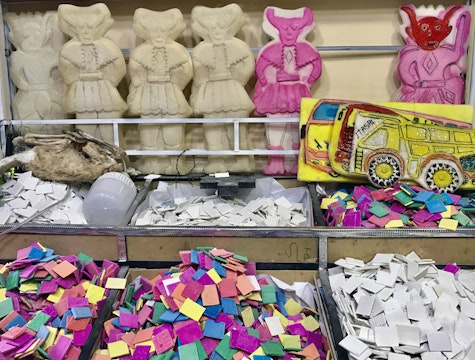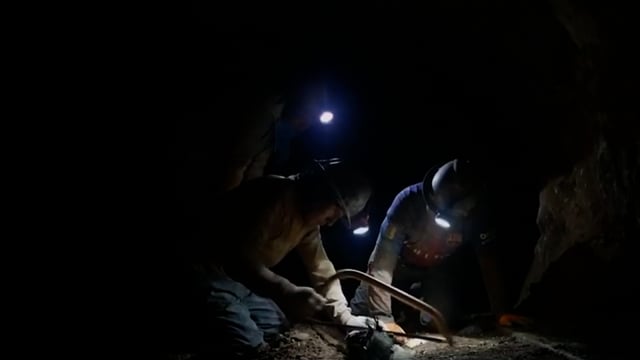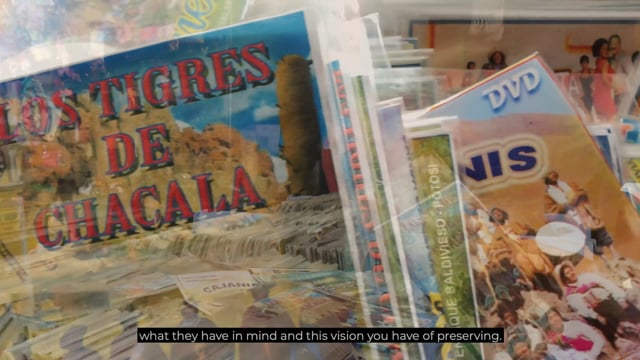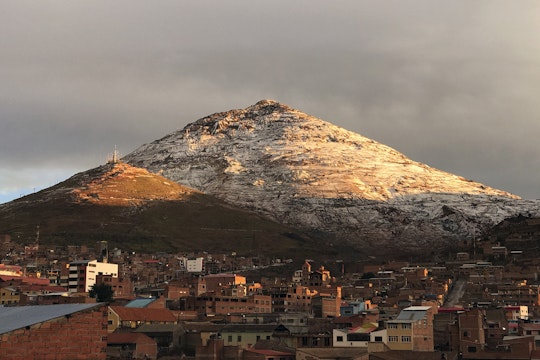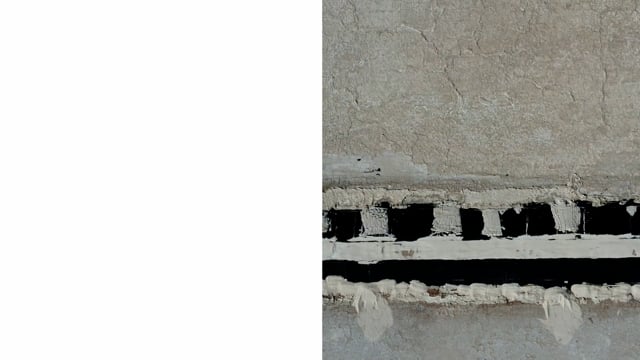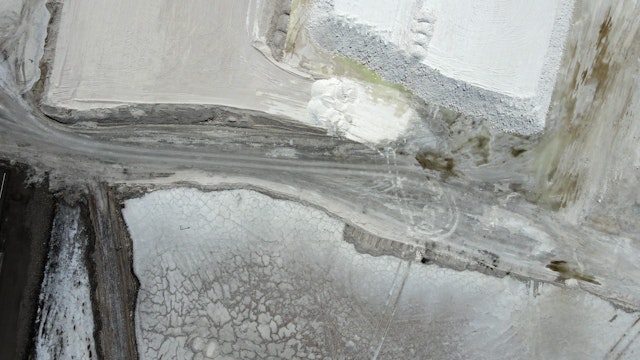La Virgen del Cerro
La Virgen del Cerro [Oil on Canvas]
La Virgen del Cerro [Oil on Canvas]
Anonymous (Century XVIII ). Museo de la Casa de la Moneda, Potosí, BO.
The triangular shape of the wak'a and the link with faith meant an opportunity for evangelization for the Spanish who, by means of sacrosanct art, created a syncretism with the Catholic Virgin and the Pachamama (Mother Earth), using the wak'a as a sacred image. This triangular shape is repeated in the vast majority of virgins of the time and has lasted until today.
The oil on canvas painting "Virgen del Cerro" by an anonymous author from the 18th century is the piece with the greatest iconographic significance in the Museo de la Casa de Moneda (Mint House Museum of Potosí). This work, on the other hand, highlights the influence of the Spanish-American baroque, but with an expression typical of the region that synthesizes history, the religions of the new world and the conquerors, customs and even nature. The author wanted to represent and he more than succeeds in showing the coronation of the Virgin Mary inserted in the Cerro Rico, whose silver wealth gave origin to the conjunction of two cultures in all their aspects. In the upper part, the Holy Trinity, represented by three different figures, participates in the coronation: The Eternal Father dressed in a pluvial cape, the Son showing the priest's ornaments for mass and the Holy Spirit personified by a dove. To both the left and the right are the archangels: Saint Michael with a cross and sword in his hands and Saint Gabriel holding a heart.
This heavenly scene is divided from the earthly one by a glory break, represented by clouds and cherubs.
The gods of the Incas, Inti (Sun) and Quilla (moon) also witness the coronation. In the lower part of the painting, the earthly scene shows various allegories; the origin of the name of the city of Potosí, showing that Huayna Capac, Emperor of the Incas, arrived in the year 1462 at the site that now occupies the city and was amazed to observe the hill that was known as Sumaj Orcko (Cerro Hermoso), ordering his vassals to explore the mountain. When they carried out the order, they heard the roar "Potojsi", hence the name Potosí. Another allegory represents the discovery of silver from Cerro Rico, in the year 1544, when the indigenous Diego Huallpa, according to others, grazed his llamas in the place that today occupies the town. One day, some flames moved away towards the mountain and one of them became lost. Huallpa had to spend the night on the hill where, because of the cold, he lit a bonfire with the keñua and wild straw that grew there. The next day, he was astonished to discover small silver threads that the heat had melted.
Civil and religious authorities thanking God for the wealth of the hill also appear in the painting in the lower part of the painting. On the left are a Pope, a Cardinal and a Bishop. On the right are Emperor Carlos V and a Knight of Santiago and the donor.
In the middle of them is a circle with a city, probably Potosí, which at that time was the centre of the economy and the power of the world. Another version indicates that it was the world at the foot of the Cerro's wealth.
